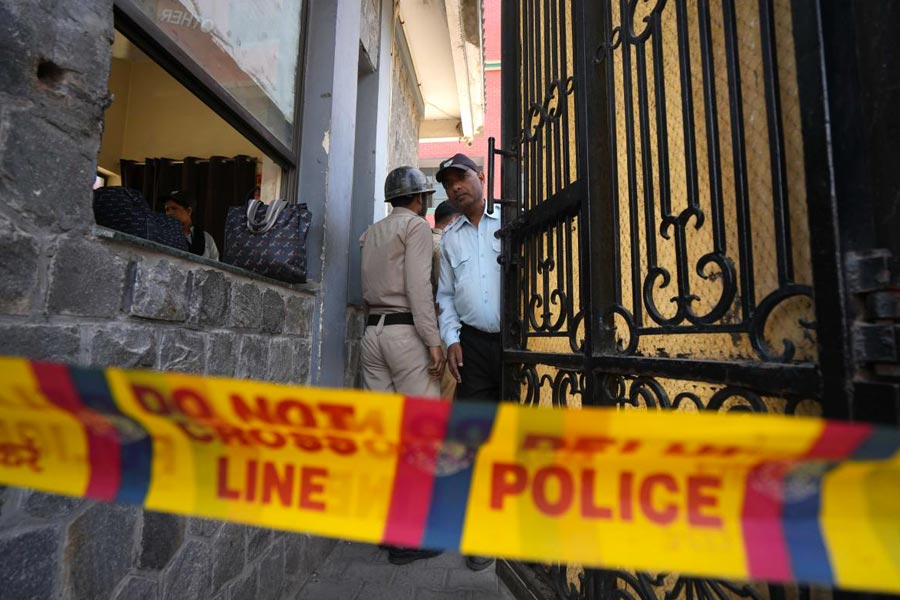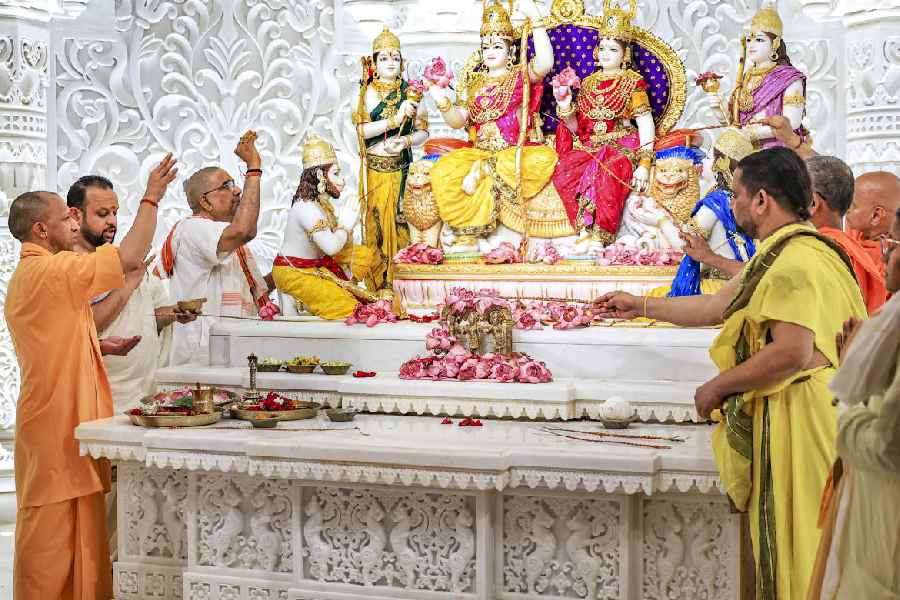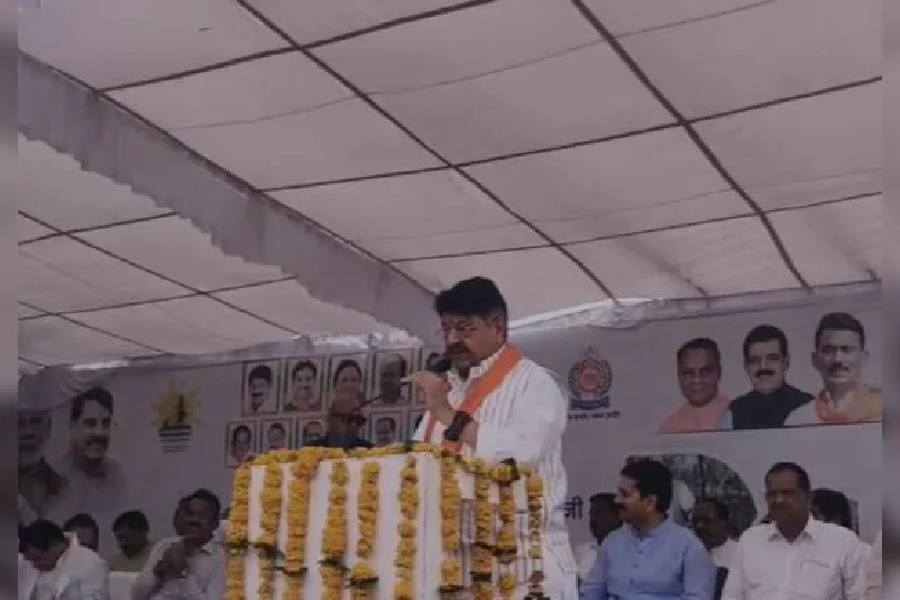 |
 |
| (From top) The temple in Tividale while under construction and the deity |
London, Aug. 27: The opening of the one of the biggest Hindu temples in Europe excited only modest interest today from the British media, not least because the UK’s one million Hindus are hugely successful, law abiding, educationally at the top of the tree, admire the British way of life, have no wish to turn Britain into a Hindu kingdom — and are not involved with terrorism.
An estimated 10,000 devotees queued patiently in Tividale, 5 miles from Birmingham, for the official consecration of the Sri Venkateswara Balaji Temple in Tividale, which has been inspired by the Sri Venkateswara in Tirupati in Andhra Pradesh.
The temple’s manager, Dr Praveen Kumar, enthused: “Thousands of people are coming even now. Devotees are queuing two hours to see the deities. Those coming late will have to wait two-and-a-half hours to get in.”
He added: “Fifteen priests have come not only from India but also from Mauritius and America.”
Most Hindus in Britain are too busy getting on with their lives to be bothered about politics and especially the politics of India. That said, the BJP has spread its tentacles into sections of London’s Gujarati community among whom Narendra Modi is a hero.
A few Hindus have recently popped up, describe themselves as “community leaders” and would like to be given as much attention (and money) as Muslim leaders who are being canvassed by Tony Blair’s government in an effort to curb Islamic terrorism among Muslim youth. Some of these Hindus appear to have links with extremist Hindu organisations in India.
However, since the Sri Venkateswara Balaji Temple in Tividale is run mainly by professional south Indians, militant Hindus do not have much of a foothold here.
Today’s opening ceremony will last five days. A 12-ft statue of Lord Krishna was being unveiled and the priests were performing Vedic rituals to purify and sanctify the land and the buildings.
So far, the white marble Swaminarayan Temple in Neasden, north London, has been the most admired example of Hindu architecture in Britain. Now, it has got competition.
The Sri Venkateswara Balaji Temple is a dream come true for a group of mainly south Indian doctors who first conceived of their plan nearly 30 years ago. The project began to take shape when 13.5 acres of former wasteland were acquired.
The total cost has been between £6 million and £7 million, including a £3.3-million lottery grant from the Millennium Commission. A further £1 million is due to be spent on landscaping the complex to transform the area into a meadow with shrubs and woodland in the style of an Indian garden.
Bimal Krishna Das, secretary of the National Council of Hindu Temples, said: “This is great news for the British Hindu community. The opening of this great temple will be a wonderful addition to the multi-religious society of Britain, especially in West Midlands.”
Dr V.P. Narayan Rao, chairman of trustees at the temple, said: “This is the fulfilment of a long cherished dream, the end of a long road and the beginning of a new era, not just for those most closely involved with the temple project but for every Hindu in the world.”
It wasn’t until 1994 that the then Black Country Development Corporation agreed to donate the site to them for a nominal sum. Nationwide fundraising began and in 1996 lottery funding was approved.
Work started on the site the following year and in 1999 the first of three smaller shrines adjacent to the site of the main temple was completed. The same year, a team of 600 builders started work in India on the main temple building.
During building work, three of the founders of the temple invested £100,000 of their own money to prevent the project going bankrupt. The concrete and granite structure was built in stages in India before being shipped to Britain to be put together on site.
A team of 30 highly-skilled craftsmen and stone masons were brought over from India to work on the intricate carvings of the gods and goddesses that adorn mahogany doors, stone pillars and the walls and ceilings inside the temple.
One of the founders of the temple, Dr Kandiah Somasundara Rajah, has been involved with the project since its origins in the 1970s.
He said: “We used to have the use of another temple but then the congregation got bigger and in 1974 some of our group thought we should get our own temple…. In spite of this, we had a lot of opposition from the locals — we organised a meeting and nearly got lynched. But we went ahead with it anyway. It came from small beginnings and it is wonderful seeing it being celebrated. It is a dream come true for all of us.”
He added: “The priests will also climb on to the roof of the temple and pour holy water over the whole building. Then it will be a sacred building. Other faiths will be welcomed here.”










